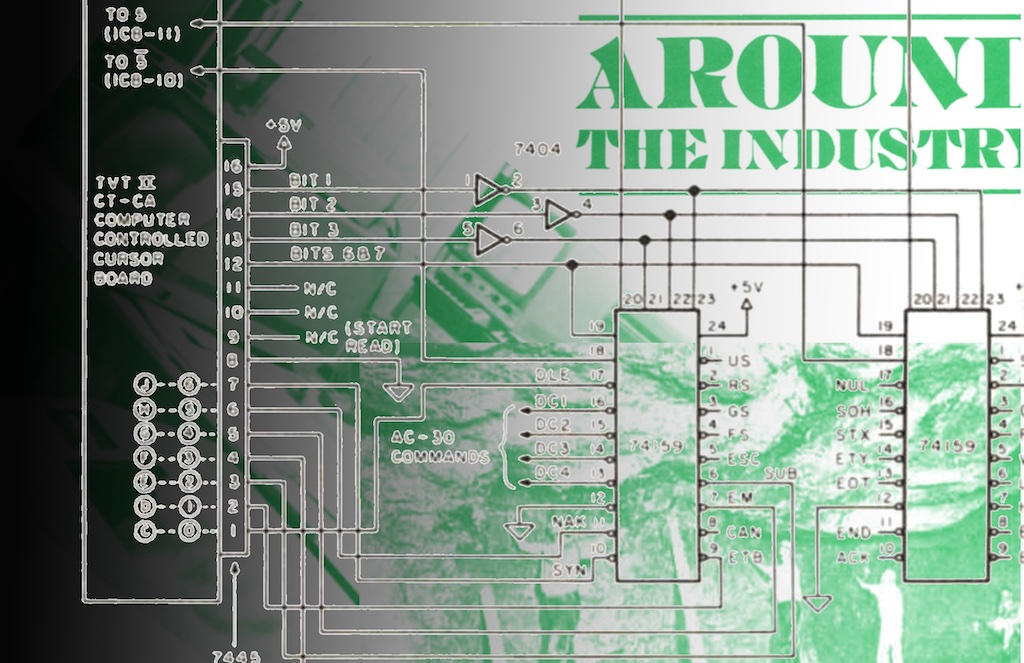
Tech workers take climate action
Worker-led initiatives and broader coalitions are challenging and transforming the tech industry’s relationship with social and environmental justice issues. In doing so, they are building on longer histories of worker organizing, including among others the Lucas Plan and Silicon Valley Toxics Coalition, and their attempts to hold the tech industry accountable for pollution and exploitation.
In this text, we’re highlighting a few examples of grassroots efforts for collective action and environmental justice in and beyond Silicon Valley. In emphasizing the roles of organized labor and environmental justice coalitions in advocating for and creating more sustainable computing practices, we aim to move beyond carbon emissions reporting as the only mechanism for understanding the relationship between climate action and the ICT industry. Labor provides a lens for including the larger supply chains and marginalized communities that are often left out of carbon-centric discussions of climate change and computing technologies.
In recent years, worker-led movements have been pressuring corporations to make climate pledges and take action on their net zero goals. Workers at Mozilla, for example, pressed the company into making four concrete climate commitments, while Microsoft’s employee-run Sustainability Connected Community now boasts over 10,000 members and 35 regional chapters. While corporate pledges on their own do not ensure action, particularly vocal Employee Resource Groups (ERGs) for climate action can press for change from the inside to hold corporations accountable— or stand in solidarity with others by joining climate strike walkouts like in 2019.
Amazon Employees for Climate Justice, a group of Amazon employees created in 2019, launched an open letter to Jeff Bezos and the Amazon Board of Directors asking them to adopt a climate plan shareholder resolution. They also protested the company’s partnerships with the oil and gas industry; two of the protest’s leaders were later fired in retaliation. The group has also pushed the company to commit to regular emissions reporting, and called for it to go carbon neutral by 2030.
In early 2023, employees publicly demanded that Amazon pay climate and flood reparations to Pakistan. Meanwhile, Amazon warehouse workers around the world are fighting to unionize and challenge corporate surveillance practices. While the sites of struggle may differ, the organizing efforts point to common goals: uplifting workers and at the same time working towards a decolonial climate justice agenda.
Histories of production and pollution
Organizing at the intersection between environment and labor has a longstanding history. Like other industries, technology firms offload harms disproportionately on poor, immigrant and racialized communities. Before it became a software hub, Silicon Valley used to be a major manufacturing center for semiconductors and electronics. Undocumented immigrants made up a large part of the workforce, particularly women of color.
The Silicon Valley Toxics Coalition, which included environmental and neighborhood groups, labor unions, public health leaders, and local residents, helped bring toxicity and e-waste from the tech industry to public attention and to put stricter regulations in place. In the 1980s, many workers sued their employers and sought compensation for systematically being exposed to toxic and carcinogenic byproducts at the workplace.
Groundwater contamination from the industrial processes continues to affect the area today, with devastating health effects on local residents. Santa Clara County, where Silicon Valley is located, has 23 superfund sites, more than any other county in the US. What is more, “clean-up” operations of these sites are producing new environmental injustices elsewhere.
Today, electronics manufacturing has mostly been offshored to East Asia, where workers are leading similar fights around occupational health and safety and creating a special union network for the semiconductors sector. Due to these grassroots efforts, the International Labor Organisation recently adopted a resolution to include a safe and healthy working environment in its framework of fundamental principles and rights at work.
Solidarity across supply chains
As the described examples show, the violence inflicted on workers and violence inflicted on the environment are inseparable from ICT production, regardless of the industry’s efforts to present digital innovation as “clean”.
The violence inflicted on workers and violence inflicted on the environment are inseparable from ICT production, regardless of the industry’s efforts to present digital innovation as “clean”.
While struggles by white collar developers and blue collar manufacturing and logistics workers are not always connected, efforts to date point to the potential to organize across the entire tech supply chain—from mining minerals to manufacturing electronics to programming and beyond.
In regard to design and policy, Cradle-to-cradle design and the Right to Repair also promise a path to less extractive and wasteful production. However, they are so far limited to small companies like Fairphone and Framework, who are implementing modular designs and modeling fair trade electronics supply chains, and are facing considerable resistance from tech giants.
The struggles we have briefly sketched in this piece point to the more fundamental question of what we collectively imagine as a desirable future of technology production from the perspective of labor. In the 1970s, when they were threatened with layoffs, manufacturing workers at Lucas Aerospace in the UK created the Lucas Plan to advocate for socially useful production. Their work could serve as a potential blueprint for workers and activists who are pushing for a Just Transition that centers the people who are bearing the brunt of environmental destruction and social oppression. The tasks of environmental justice extend beyond those identified through the “carbon tunnel vision” to wherever the costs of tech may be borne by bodies and ecosystems.

